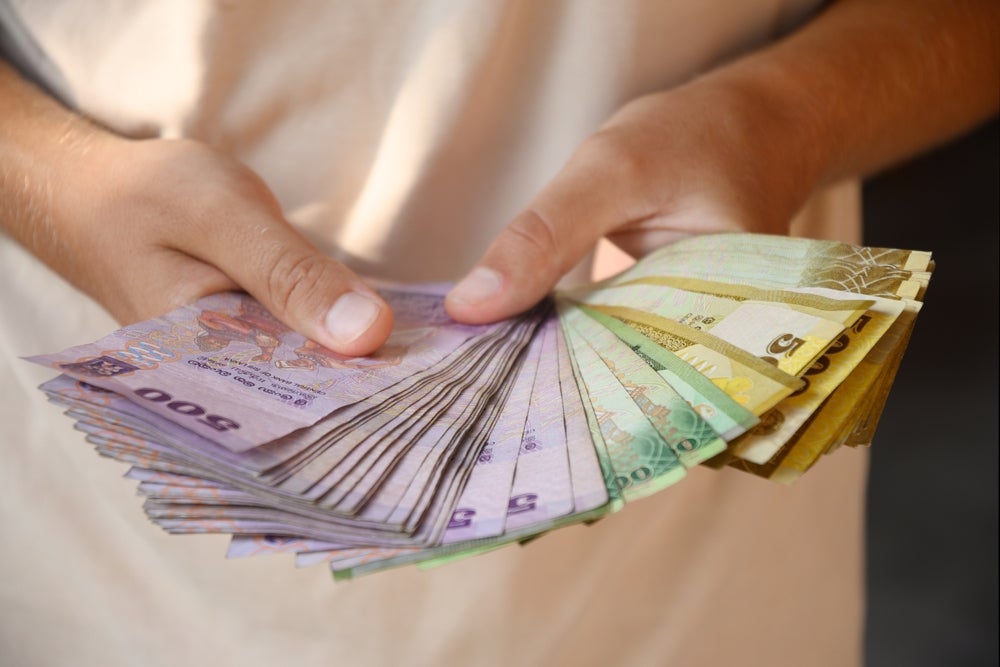Sri Lanka's garment industry minimum wage pay scale in general has “failed to cover a worker family’s needs due to high inflation,” a spokesperson for the Clean Clothes Campaign (CCC), the international alliance of labour unions and NGOs told Just Style.
In March (2024), Sri Lanka's government increased the national living wage by 40%, from LKR12,500 ($42) to LKR17,500 ($59) per month, on top of a LKR3,500 budgetary relief allowance, bringing the total minimum monthly pay to LKR21,000 ($70).
Although it is a big jump in terms of percentage, the CCC argues the amount is still low given the 5.9% inflation as of February 2024 (announced by the Central Bank of Sri Lanka). This inflation rate also followed punishing 2023 inflation of 54.2% in Q1, from which it fell steadily to more manageable levels.
Clothing exports are Sri Lanka’s highest exchange earner and in 2021 to 2022 it accounted for 52% of the country’s total export revenue, said the CCC. For an export-heavy sector like clothing, employing 350,000 workers directly the pay scale is “inadequate,” argued the NGO.
However, representing the Sri Lanka's garment industry, the Joint Apparel Association Forum general secretary Yohan Lawrence said the clothing sector’s own industry-agreed minimum wage, adding in the government budgetary allowance, stands around LKR24,000 ($80)
Of Sri Lanka’s nearly 400 apparel production sites, the CCC claims that more than half are owned by just 10 companies. Of that, 110 production sites are owned by only three companies meaning there is a concentration of power among a few companies.
The NGO has urged clothing brands to put pressure on clothing manufacturers to ensure they provide adequate worker rights on top of decent pay. Among the key demands are to stop increasing female workers’ overtime working hours from 60 to 75 hours per month, contract terms, protection from arbitrary termination and ensuring the safety of workers taking part in peaceful protests.
The country’s debt-ridden economy has been reeling under a long-drawn economic crisis triggered by a severe foreign exchange crisis that peaked in 2022 when Sri Lanka’s foreign reserves dipped to $50m. In November that year inflation hit 46.7% and the Sri Lankan rupee tumbled 44.8% against the US dollar, according to the Central bank of Sri Lanka.
Since then, following an International Monetary Fund (IMF) bailout package and suspension of debt payments, the currency has started to appreciate against the US dollar, currently at around LKR297 to $1, compared to LKR324 to $1 in January 2023.
But these fluctuations have strained export-oriented sectors such as clothing, stated Lawrence: “We agree prices on a long-term basis” he said, any appreciation of the currency makes exports more expensive.
Moreover, the exchange rate is not a “real reflection” of improving economic conditions, he warned: “Once debt restructuring is agreed and debt payments are recommenced, it will put pressure on the dollar and [the LKR/US$ exchange rate] will increase again,” he said adding however it will take time for these agreements to bed in and stabilise the country’s financial position.
Going forward, Lawrence told Just Style a reduction in Sri Lankan clothing export sales seen by the end of 2022 has levelled off and therefore a $4.5m export target for this year still looks promising.









